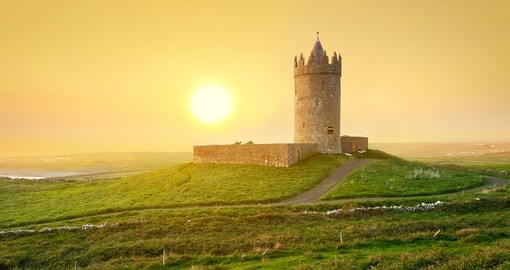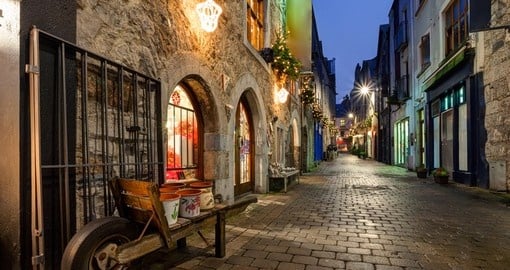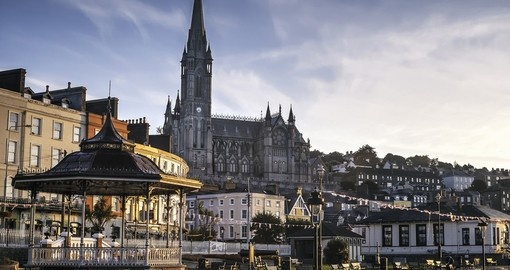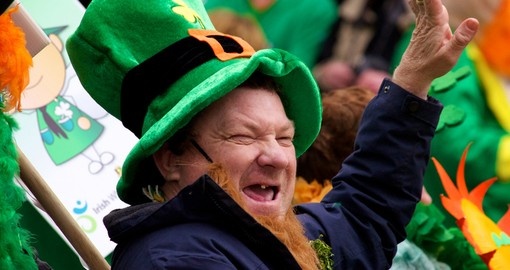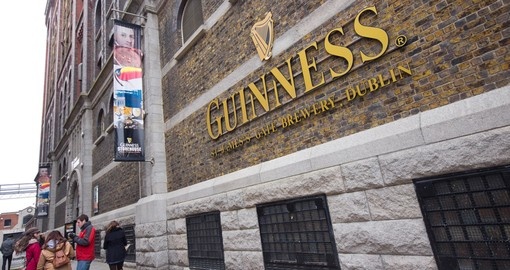Ireland Travel Information
Ireland is divided into the Republic of Ireland, which covers five-sixths of the island and Northern Ireland which is a part of the United Kingdom and which covers the remaining area located in the northeast of the island. Ireland is made up of relatively low-lying mountains surrounding a central plain with several navigable rivers extending inland. The island's lush vegetation, a product of its mild climate and frequent rainfall, earns it the name the Emerald Isle
The most visited destination is Dublin, a city of some considerable charm with its major university, Trinity College where the ancient Book of Kells is located. The River Liffey flows through the centre of the city on its way to the sea. Dublin is home to Dublin Castle, the Guinness Brewery and the iconic Abbey Theatre. The west coast of Ireland is the most scenic area in the country. Killarney in the southwest in County Kerry, apart from being a very attractive town, is the ideal starting point to visit the three tourist regions offering dramatic stunningly wild landscapes and spectacular scenic rugged coastlines. These are the Ring of Kerry which provides a circular journey around its spectacular peninsula, the Dingle Peninsula, just north of the Ring of Kerry and the Beara Peninsula immediately south.
On the west coast is Connemara in the northwest of County Galway where one finds mountains of a deep and rich colour of green and when the clouds roll in, they seem almost magical. Nearby Galway is an important tourist centre and the gateway to the scenic areas of the county. Galway is a bustling town with lively nightlife and charming pedestrian streets and numerous pubs and cafes to enjoy.
Kilkenny in southeast Ireland is known as Ireland's Mediaeval Capital. It offers the visitor a mixture of exciting vibrant nightlife, attractive streets, great shopping opportunities and rich cultural heritage. The city is famous for its many mediaeval buildings. Cork, situated on the banks of the River Lee in the south of the country, is the second largest city in the Republic of Ireland and the third largest in Ireland. Elizabeth Fort offers a good view of the city. The Elizabeth Fort Market Festival takes place on Sundays inside the historic fort walls and features Irish-made crafts, gourmet food, and entertainment. St. Finbarr's Cathedral is a magnificent 19th-century Gothic building.
There are several typically Irish castles located in the Republic of Ireland all worth visiting including Bunratty Castle and Blarney Castle.
Belfast is the capital and largest city of Northern Ireland and the second largest city in Ireland after Dublin. It is an excellent point from which to explore County Antrim. This county boasts some beautiful inland and coastal scenery which include the scenic Glens of Antrim and the Giants Causeway with its columns of mysterious stepping stones that lead from a cliff foot and disappear under the sea.
Ireland Travel Information
At Goway we believe that a well-informed traveller is a safer traveller. With this in mind, we have compiled an easy-to-navigate travel information section dedicated to Ireland.
Learn about the history and culture of Ireland, the must-try food and drink, and what to pack in your suitcase. Read about Ireland's nature and wildlife, weather and geography, and 'Country Quickfacts' compiled by our travel experts. Our globetrotting tips, as well as our visa and health information, will help ensure you're properly prepared for a safe and enjoyable trip. The only way you could possibly learn more is by embarking on your journey and discovering Ireland for yourself. Start exploring… book one of our Ireland tours today!
Get a Trip Quote Order a Brochure






